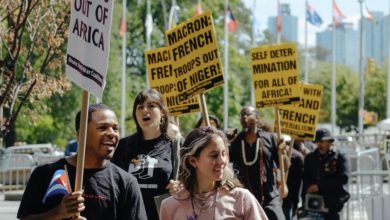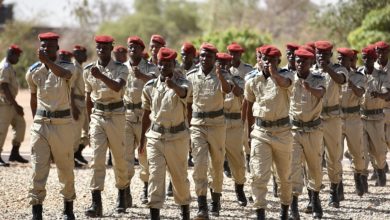Somalia has recently returned to the headlines with the news that the U.S. government has been quietly providing low-level military hardware to Somalia’s Transitional Federal Government, most recently shipping 40 tons of ammunition. This comes as little surprise given that the United States also supported an Ethiopian invasion and occupation in 2006 that lasted until the end of 2008.
|
Shahab has had the upper hand since the Ethiopian pullout and controls most of southern Somalia and a large part of Mogadishu. Shahab was a large part of the Islamic Courts Union, which had unified the country in 2006 for the first time since the fall of the Siad Barre government in 1991.
The U.S. government found an ICU-controlled Somalia unacceptable. U.S. imperialists accused the ICU of being an Al-Qaeda affiliate, and used this excuse to support the Ethiopian invasion, which destabilized the country.
U.S. charges of terrorism towards the ICU, however, were spurious. U.S. allies like Saudi Arabia and Egypt also had given some support to the ICU. Somalia, with its proximity to the Middle East and location close to some of the world’s busiest shipping lanes, was obviously considered by the United States to be too important to be ruled by a government such as the ICU, whose unqualified support to the imperialists could not be counted on.
With the fall of the ICU government as a result of the Ethiopian invasion, the ICU splintered, with a large number of the forces working with Al-Shahab. Shahab was able to capitalize on the Ethiopian occupation to recruit large numbers of youth driven both by Islam and a desire to defend the right of self-determination for their own country. However, Shahab has driven some out of its camp because of their particular and strict interpretations of Islamic law.
This gave a boost to the TFG, which brought in former ICU leader Sharif Ahmed to become “president” of Somalia. The TFG controls almost no territory outside of a few blocks in Mogadishu despite being protected by 4,000 African Union “peacekeepers.”
The TFG formed in October/November 2004 in Nairobi, Kenya, as a collection of warlords and leaders mainly from the southern part of the country. It was never able to broaden its leadership or restore institutions, which is what led to the rise of the ICU originally. The TFG was able to prove its reliability vis-?-vis the ICU with its connivance with the Ethiopian occupation, which protected its power.
President Ahmed has proclaimed Islamic law across the country, but despite his addition to the TFG it has not been able to gain more territory or reunify the various autonomous regions in the central and northern regions. This calls into question claims by the TFG to be a broad-based, widely supported government.
Revolving door of power brokers and warlords
The basic problem with the TFG remains the same: It is a revolving door of various power brokers and warlords, based ostensibly on the labyrinthine clan structure in Somalia—the same people who prevented unity in Somalia in the post-1991 period. If one adds to this its involvement in the Ethiopian occupation, the standing of the TFG among large sections of the people, already no doubt disillusioned with a government of warlords, has clearly eroded.
While the African Union has troops in Somalia, it does not have the will, and most likely lacks the resources, to provide a military force capable of propping up the TFG. Thus the only real recourse for the TFG is to seek U.S. military support.
The U.S. imperialists want to seize this moment to install a government that will not threaten U.S. regional interests. This will lead to increased fighting as the TFG, with U.S. blessing, will seek to gain the military upper hand to force negotiations, or even more destructive, attempt to crush Al-Shahab. The counter-process to this is that Shahab will rely on support from wherever they can get it, including Islamic militants from around the world.
It is clear that U.S. intervention starting in 2006 served only to further divide Somalia, and their support for the TFG has increased the violence and instability in the country. Somalia is now caught up in the “war on terror.” While one may not agree with the politics of the ICU, the Ethiopian invasion in 2006 broke apart the first true unification process since 1991, and rather than increase chances for stability and rebuilding in Somalia, the actions of the United States and its backing of the TFG will increase the suffering of the Somali people.
For socialists in the United States, it is crucial to expose this U.S. hypocrisy in claiming to be “helping” Somalia, continue to support self-determination for Somalia, and oppose the militarization of the African continent in pursuit of U.S. economic interests.






